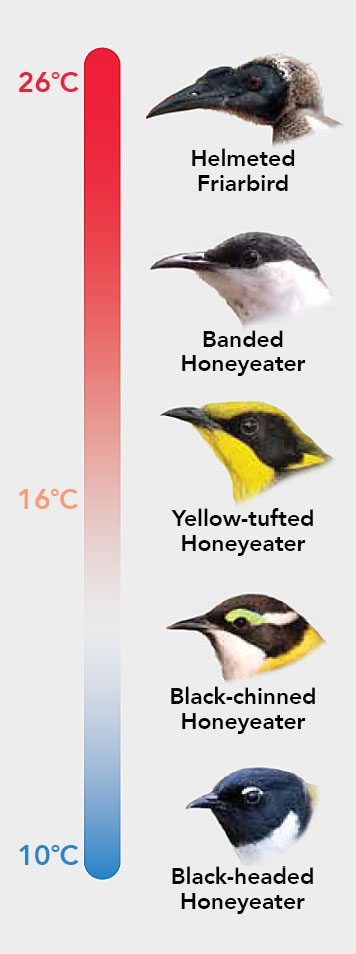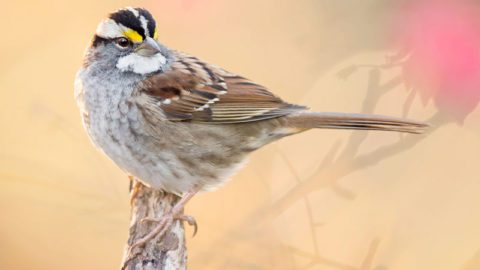A Bird’s Beak Is Shaped by More Than What it Eats
By Kathi Borgmann
September 17, 2020
From the Autumn 2020 issue of Living Bird magazine. Subscribe now.
Bird beaks come in a dizzying array of sizes and shapes. And as Peter Boag and Peter Grant discovered in the 1970s, bird beaks are likely shaped by what they eat.
Boag and Grant observed that, following a severe drought on Daphne Island in the Galápagos, as small and soft plant seeds were replaced by tougher and larger seeds, the average beak size of the Medium Ground-Finch became larger. Over time, bill size evolved to better crack open the seeds consumed by the ground-finches. After all, a bird needs the right tool to do the job.
New research published in December 2019 in the journal Proceedings of the Royal Society B shows that the size and shape of a bird’s beak aren’t only shaped by what the bird eats.
“If you’re out with your binoculars you can see birds doing all sorts of behaviors with their beaks, things like getting food, building a nest, preening, and singing,” says lead author Nicholas Friedman, from the Okinawa Institute of Science and Technology in Japan.
“Since a bird can’t fly around with a Leatherman for a beak, we wanted to know how these competing pressures play out. What determines the shape and size of each species’ melted-down Leatherman?” says Eliot Miller, coauthor on the study and collections manager at the Macaulay Library at the Cornell Lab of Ornithology.
“Instead of focusing on just one function of the beak, we wanted to compare multiple functions together— things like body size, climate, and how they forage for food,” continues Friedman. “And we wanted to see how these functions change the size and structure of honeyeater beaks, and what impact this evolution has on how they sing.”
To answer these questions, the team needed to find a group of birds with many different types of beaks, and honeyeaters are one such group. Although many honeyeaters eat nectar and pollen, they are an incredibly diverse group of birds, from the stubby-billed Bell Miner to the large-billed White-streaked Friarbird to the delicately curved-billed Red-headed Myzomela.
Friedman and colleagues scoured museum specimens and digital sound archives worldwide to learn more about honeyeater beaks. They measured honeyeater specimens at the Natural History Museum in the United Kingdom, and they analyzed audio collections at the Macaulay Library, Xeno-canto, and the Australian National Wildlife Collection to assess song characteristics.
Friedman and colleagues discovered that while the thickness of a bird’s beak was related to how they foraged and what they ate, climate also played a role in shaping honeyeater beaks. Honeyeaters such as the Black-headed Honeyeater that inhabit cooler regions of Australia had shorter beaks than their relatives, and a shorter beak is better for heat retention, but not as good for shedding heat during hot weather. Because the birds are trading off benefits of one trait in favor of another, the authors argue that birds may be adapting to these trade-offs by changing their behavior.
“Heat-stressed birds with small beaks might modify their activities to search for food primarily at dawn and dusk, or to make frequent visits to the waterhole to cool off,” Miller says.
Factors that shaped the size and structure of a bird’s beak also affected how it sang. For example, species with longer beaks such as Noisy Friarbird sang slower, and species with longer and narrower beaks sang at lower frequencies.
Friedman and colleagues concluded that it’s not just what a bird eats, but how they eat and where they live that affect both the size and shape of a honeyeater’s beak. And these characteristics in turn affect bird song.

All About Birds
is a free resource
Available for everyone,
funded by donors like you
American Kestrel by Blair Dudeck / Macaulay Library



